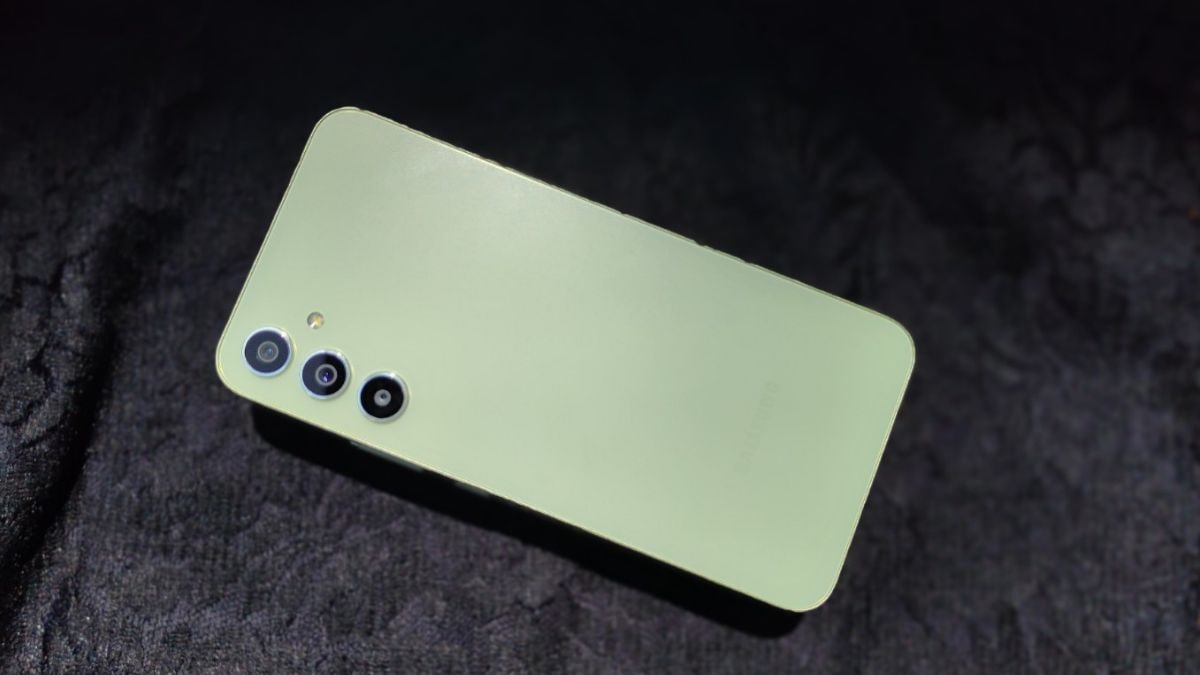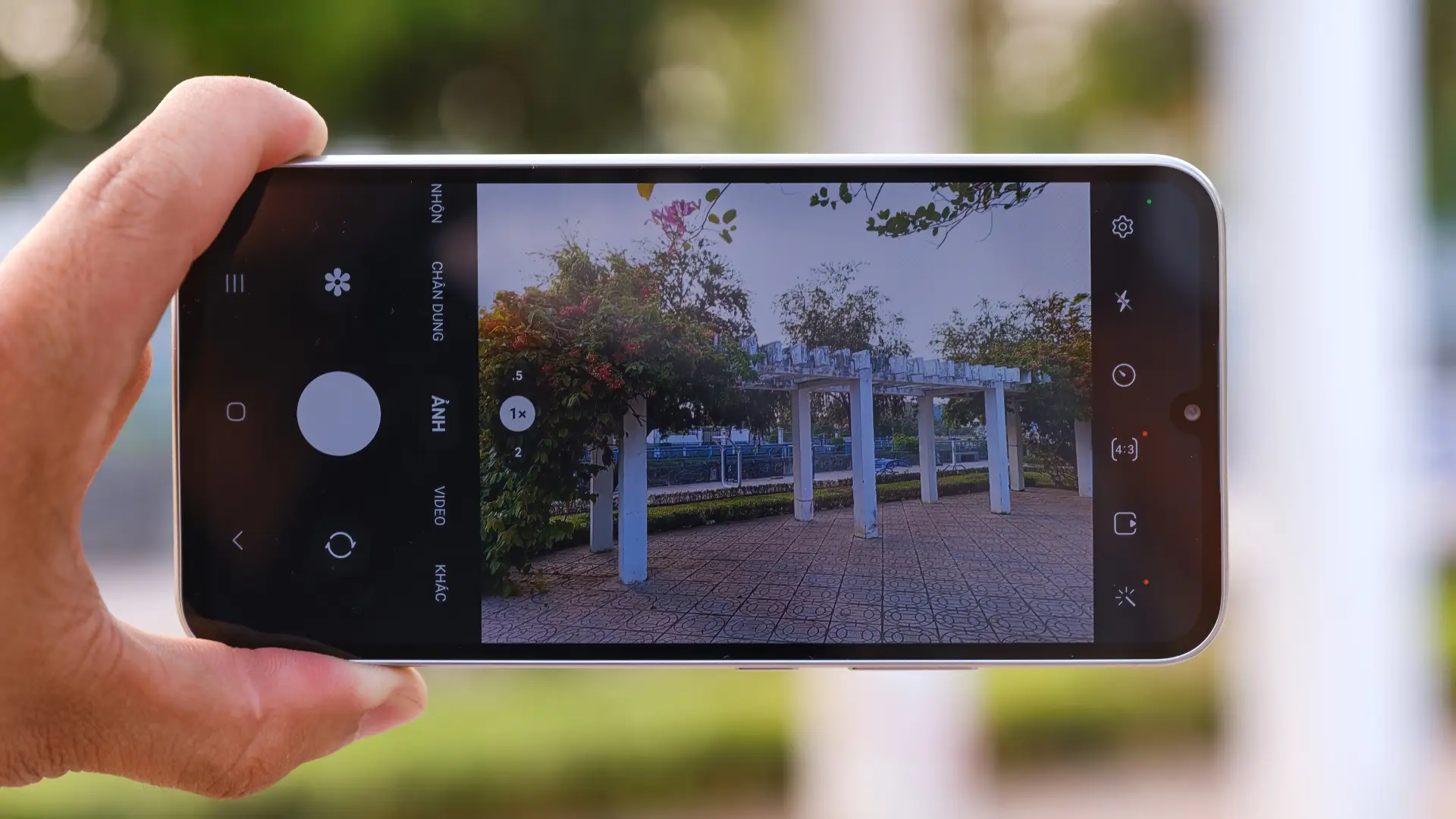Samsung Galaxy A34 5G long-term review: One feature makes this Rs 30,000-worth phone above competition
Samsung Galaxy A34 5G packs a reliable chipset and you also get the power of 5G. The phone proves that specifications aren't everything. That being said, there are some visible setbacks.

- In a nutshell, the Samsung Galaxy A34 5G has two storage configurations.
- The entry-level 128GB variant costs Rs 30,999.
- Costing Rs 32,999 is the 256GB variant.
Even while the Samsung Galaxy A34 5G may not have the highest number of specs currently available, it does have some interesting features. Most importantly, it is one of the few breeds of Android phones in the Rs 30,000 price range that offers a four-year update guarantee, a promise that even the most expensive Android smartphones sometimes fail to keep. Simply put, consumers will have the chance to utilise new features over the following four years, extending the life of the phone.
In addition to the four years of Android commitment, it provides practically all of the features that modern clients demand. It has a large 6.6-inch Full-HD+ AMOLED screen with a refresh rate of 120Hz. A 48-megapixel OIS camera and a largely useful 5-megapixel macro camera are part of the rear camera system. Two SIM cards can be used—SIM 1 + Hybrid (SIM or MicroSD)—and 5G is supported. Additionally, NFC functionality is available, which is useful for conducting digital payments.
However, the Galaxy A34 5G lags behind its rivals in a few key areas. First of all, the Galaxy A34 costs the same as the Motorola Edge 40, which is also a somewhat big phone. Its 256GB storage variant, which I also use, costs Rs 32,999, which is somewhat more than the 128GB storage model, which costs Rs 30,999. The 5,000mAh battery is sizable, but the 25W charging speed may seem slow when compared to what Samsung's Chinese competitors provide on their sub-Rs 20K smartphones.
Despite all of these drawbacks, I believe the Galaxy A34 5G to be a reliable device and a desirable upgrade for current Samsung smartphone owners. The viewpoint might change if you've never owned a Samsung phone and are eyeing a Rs 30,000 value-for-money phone. I will give a detailed analysis and an explanation of why in this long-term evaluation.
Design and display of the Samsung Galaxy A34 5G
Samsung has been using a same design aesthetic throughout all of its devices, whether they are the pricey Galaxy M34 or the high-end Galaxy S23 Plus. Since this strategy aims to bring about uniformity among its products, I actually enjoy it. After all, Samsung releases a big selection of phones every year.
The stereo speakers, SIM card tray, USB-C connector, volume rockers, and power button are the only other things you won't find at this pricing point. The SIM card tray is located at the top of the device. It's important to note that there isn't an audio jack, which is unusual in this market right now.

Regarding the display, there isn't much to complain about, although some users could find the hefty top and bottom bezels and the antiquated waterdrop notch for the selfie camera bothersome. After a few days of use, I believe the majority of people will likely forget about these little flaws. It would be wonderful if Samsung raised the standard in this area given their reputation as a pioneer in high-end displays. However, the phone's brightness is enough for outside use, and movie viewing produces vivid colours. Although top Samsung phones have considerably greater contrast, the blacks are likewise deep.
It shouldn't be difficult to watch shows on well-known streaming services like Netflix, YouTube, and other OTTs. Full-HD+ resolution is supported by the display.
There is a fingerprint scanner integrated into the display as well. For speedier performance, I typically like fingerprint scanners on the power button. The fingerprint scanner on the Galaxy is not only uncomfortable to use ergonomically since it is too close to the bottom bezel, but it also reacts more slowly than scanners on competing devices like the iQOO Neo 7 and Motorola Edge 40.
Specs of the Samsung Galaxy A34 5G
The MediaTek Dimensity 1080 SoC, one of the most reliable chipsets in this market, provides power to the Galaxy A34 5G. During our 15-minute throttle test using the Throttle app, it experienced no heating difficulties. Users can select between two storage options, and the SoC is combined with 8GB of RAM. I conducted the review using the 256GB variant.
The Galaxy A34 performed poorly in benchmark tests when compared to its competitors. Its single-core and multiple-core scores on the Geekbench CPU test were 773 and 2536 points, respectively. The phone achieved an average fps of 13.7 and a score of 2,288 in the 1-minute Wildlife test by 3D Mark. These results are noticeably lower when compared to the Motorola Edge 40, which costs Rs 30,000.
However, statistics do not tell the whole story; for routine tasks, the Galaxy A34 5G performed well with only a few tiny stutters. During my review period, most of the apps—including WhatsApp and Chrome—operated without any issues. The Galaxy A34 can handle and run most games if you're a serious gamer, but there are better options on the market for this price range. I played 8-ball pool and games like Angry Birds without experiencing any heating problems. Switching to heavier games like Pokemon Unite causes the experience to become a little disappointing. The haptics and sound quality in games are also subpar, which makes for a poor experience.
There are various advantages for productivity, which is what the Galaxy A34 5G is primarily made for, including seamless networking with other Samsung devices. All of the devices I used with the phone—the Galaxy Book 3 Pro, Galaxy Buds 2, and Galaxy Watch 5 Pro—were intricately connected to one another.
The guarantee of four years of Android updates is, as was already noted, the Galaxy A34 5G's greatest advantage. It comes pre-installed with Android 13 and receives regular upgrades.
There is a tonne of bloatware (removable), as well as several Samsung and Google apps that cannot be deleted. While I don't mind having pre-installed apps, I believe the Android ecosystem has to evolve because, unlike the Apple ecosystem, it does not allow for the removal of proprietary apps. Additionally, there are adverts on the lock screen that are difficult to turn off. Brands may make these commercial decisions in order to maintain a competitive price, but consumers should at least have the choice to turn off unused apps and notifications.
Regarding the battery, I've never had a strong opinion about Samsung mid-range smartphones. While I don't mind Samsung getting rid of the charger, the Galaxy phones still don't support ultra-fast charging, whereas their Chinese competitors can reach 80W at this price. A full day or even one and a half days of backup are readily guaranteed by the integrated 5,000mAh battery, which is the good news. Remember that the highest settings are active in this case, including 5G, always-on display, and 120 Hz refresh rate.
cameras from Samsung Galaxy A34 5G
When it comes to photography, Samsung's new philosophy of "less is more" is appealing to me. The new Galaxy A34 has three sensors on the back and one on the front, down from four rear cameras on its prior mid-range models. A 48-megapixel primary camera with OIS capability, an 8-megapixel ultra-wide camera, and a 5-megapixel macro camera are all featured on the rear. There is a 13-megapixel sensor on the front panel.

OIS (Optical Image Stabilisation) on the main camera has unquestionably made a difference. The Galaxy A34 5G takes steady pictures and movies when compared to the Galaxy M33 or M52 from earlier generations. This development was apparent in both dimly lit and well-lit environments. However, there is still room for increase in the processing power. I've encountered situations when an oil-painting effect is discernible, despite the fact that the primary and ultra-wide cameras generate decent colours with a respectably high dynamic range. Zooming in makes the effect more obvious.
Even in low-light conditions, the two rear sensors produce pictures that are largely comparable, with the processing unit deftly boosting shadows and warmth. Natural colours are sacrificed, but the overall appearance of the pictures and movies is improved. This might be advantageous, though, if you don't like to alter your media before sharing it to websites like Instagram.
Unexpectedly, the 5-megapixel macro camera is also usable, though it needs plenty of light to operate effectively.
The 13-megapixel camera on mid-range Samsung phones is generally good, but skin colour recognition is still a problem. My complexion has been lighter on multiple instances thanks to the phone, which some users or makers could secretly appreciate. Additionally, the camera app offers a "fun" mode that makes use of Snap filters.
Overall, the Samsung Galaxy A34 5G's cameras deliver a consistent and dependable performance, which is essential for meeting the needs of the majority of customers. The Nothing Phone (1) or Pixel (6a) are excellent choices if you're a budding content maker and value natural tones. The Samsung Galaxy A34 5G won't let you down if you're comfortable with high contrast and pale skin tones in your photographs and videos.
Verdict on the Samsung Galaxy A34 5G: Is it worth it?
As I stated at the outset of this review, the Samsung Galaxy A34 5G is not the handset with the most features available, but it is a dependable option for people replacing their previous Samsung phones. It operates faultlessly for daily production with no careless stutters. If you maintain good battery hygiene, you can anticipate the same performance even after two years. Additionally, Samsung is pledging a total of four years of Android OS updates, which ought to become the norm going ahead.
The Galaxy A34's camera performance is passable, but there are better options for videos. I would advise choosing the 256GB storage option because it might prove advantageous in the long term. The Motorola Edge 40 is also a fantastic choice in this price range if you place a high priority on productivity and battery life. It does, however, have a curved display, which can be more difficult and expensive to repair. In contrast to Samsung, which is no longer the case, Motorola is likewise famed for being hesitant to push Android. In that case, the Galaxy A34 will do if you like a flat display, a sturdy body, and dependable performance.












